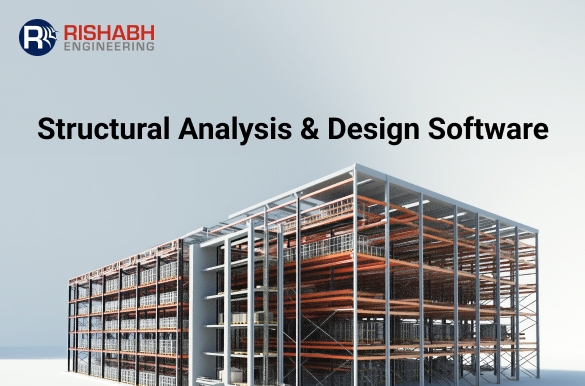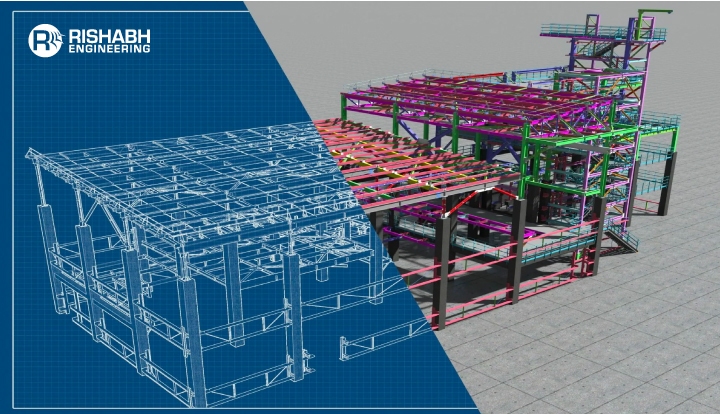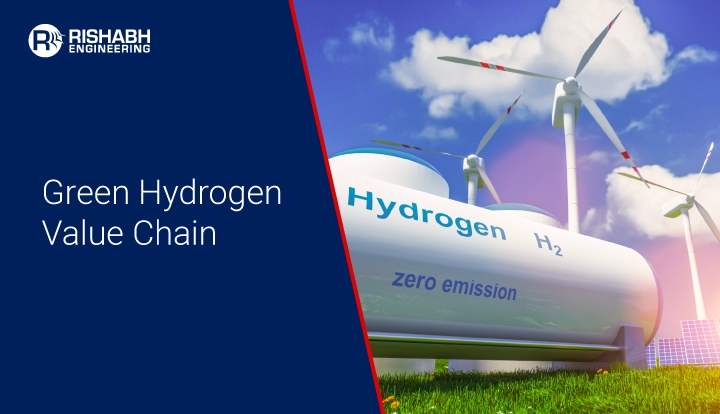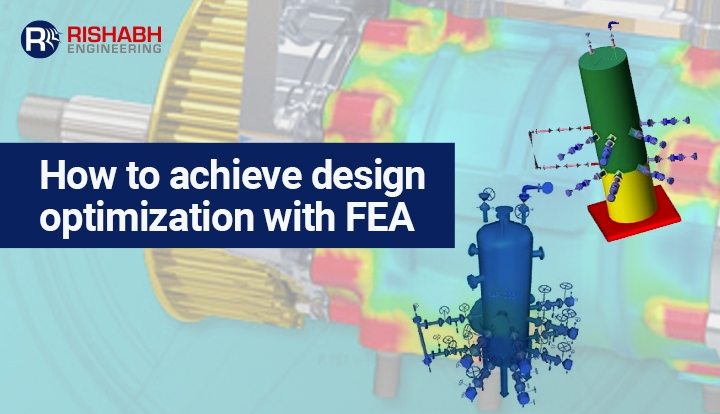
Essentials Of Finite Element Analysis (FEA) For Design Optimization
In the fast-paced engineering world, the quest for optimum design solutions via Finite Element Analysis (FEA) remains. Engineering teams continually refine their methodologies, utilizing this technique to enhance structural integrity, expedite operations, and generate superior results. In this article, we will explore the concept of FEA optimization while addressing its need, techniques, steps with real-world use cases of Rishabh Engineering.

What Is The Need Of FEA For Design Optimization?
FEA is a crucial tool for design optimization, serving a variety of essential needs that contribute to the enhancement of engineering solutions. Here are key reasons highlighting its need in the design optimization process:
- Design Revalidation: Through FEA, design revalidation helps ensure continued compliance with performance standards and address evolving requirements. It empowers engineers to revisit and refine initial designs, considering factors like structural integrity, material efficiency, and performance under diverse conditions. By subjecting designs to rigorous simulations, FEA identifies potential issues and guides iterative improvements, facilitating design optimization. This iterative process not only enhances the reliability of structures and components but also validates their resilience to changing variables. Ultimately, this process safeguards against unforeseen challenges and reinforces the robustness of engineering solutions.
- Predictive Analysis: It allows engineers to predict and analyze the behavior of a design under various conditions and loads. Simulating real-world events provides insights into how a structure or component will react to various stresses and thus ensuring that possible flaws are discovered and solved before their physical prototypes get created.
- Cost Efficiency: It aids in identifying areas for improvement early in the design phase, reducing the need for costly modifications and iterations later in the development process. This upfront analysis helps in optimizing designs to meet performance criteria efficiently, ultimately saving time and resources.
- Complexity Handling: For intricate designs and structures, traditional analytical methods may fall short. FEA specializes in dealing with complicated geometries and material properties, offering a more precise representation of actual operating circumstances. This is especially useful in areas where complicated and sophisticated designs are commonplace.
- Material Selection and Optimization: FEA assists in selecting the most suitable materials for a given design by evaluating how different materials respond to various stress and strain scenarios. This information is critical for maximizing material utilization and ensuring that components are both structurally sound and economically feasible.
- Performance Validation: Engineers utilize it to validate and refine their designs against specified performance criteria. It would include evaluating structural integrity, load bearing capacity, and overall functionality. Validation via simulation allows designers to arrive at informed decisions for best performance.
- Iterative Design Process: FEA facilitates an iterative design process, allowing engineers to make continuous improvements based on simulation results. This iterative approach allows for the fast investigation of numerous design choices, resulting in the identification of the most efficient and effective solution.
- Risk Mitigation: By simulating a range of operating conditions, FEA helps identify potential failure points and weak areas in a design. This proactive risk-mitigation technique improves the end product’s reliability and safety, lowering the possibility of unforeseen issues in real-world applications.
- Comprehensive Analysis: FEA provides a comprehensive analysis of a design’s performance under various factors such as thermal, mechanical, and fluid dynamics. This holistic assessment guarantees that every component of a design is evaluated, resulting to well-rounded optimization.
FEA Optimization Techniques
Finite element analysis-based design optimization consists of two primary approaches: parametric and non-parametric. In the parametric approach, software automatically identifies the natural shape, aligning it with robust load-bearing capabilities while minimizing costs. This method offers a distinct advantage as it allows modeling from scratch without relying on an original design. To determine the best design relative to the starting point, critical parameters or design variables are selected, each with a defined allowable range. The parametric approach involves varying these parameters within their permissible ranges to ascertain the optimal design. Additionally, structural metrics are optimized, with a simultaneous focus on minimizing the final volume.
Finite element optimization can be further classified into methods based on optimizing grid locations (shape optimization), geometric properties (sizing optimization), or material properties (material optimization). Let’s discuss them in brief.
- Topology Optimization: In the realm of material optimization, topology optimization is a specialized method dealing with element material fractions between 0 and 1. Applied at the conceptual level of design development, it aims to distribute material more effectively across a model, minimizing strain energy. This mathematical approach considers designer-set boundaries, applied loads, and space limitations to craft a design. The results obtained are often fine-tuned for manufacturability, prioritizing efficiency over aesthetics in material distribution. The primary advantage lies in its capability to reduce unnecessary weight, translating into substantial cost savings in competitive markets.
- Shape Optimization: Shape optimization focuses on selecting optimal structural geometry to enhance desired mechanical behavior while respecting specific constraints. Automated design optimization tools aid engineers in exploring creative solutions, especially in problems involving potentially hundreds of design variables. These tools estimate the effects of modifying numerous design parameters, encompassing not only straightforward dimensional changes but also general alterations in shape. Shape optimization involves both linear and nonlinear finite element analysis, offering versatile solutions for intricate design challenges.
- Sizing Optimization: Throughout the design phases, panels, beams, and joints can undergo sizing optimization, addressing cross-sections and thickness properties of finite elements. This optimization method effectively reduces the weight of various materials and panel concepts, yielding consistent and manufacturable designs. The ease of calculating sensitivities for sizing optimization purposes makes it applicable even in handling the most complex problems. This approach ensures efficient use of materials and resources, contributing to cost-effective and high-performance outcomes in diverse engineering scenarios.
Listed below is a high-level illustration of the commonly applied FEA optimization techniques. It could vary depending on the project complexities and components being analyzed.
Steps for Design Optimization
- Step 1: Simplify the Model
To commence the analysis, simplify the model by retaining only essential elements. Remove everything except the structure and components necessary for defining the analysis. - Step 2: Add the Boundary Conditions
Once the model is simplified, define loads, constraints, and contacts. Utilize engineering judgment to establish realistic constraints that mirror actual conditions. - Step 3: Generate the Mesh
Depending on the model’s complexity and mesh generation time, opt for automated meshing or specify local mesh rules. - Step 4: Refine the Mesh
After generating the initial mesh, optimize it using local mesh controls for a robust outcome. Designate smaller mesh elements for rounded surfaces, tight angles, and areas prone to stress concentrations. Run the optimized mesh. - Step 5: Analyze Results
After generating results, analyze the performance. Set the color contour bar with a maximum corresponding to materials yielding stress. Identify areas for efficiency improvement, such as removing sharp corners with stress concentrations. Adjust material in high-stress locations and remove material under low stress, considering the impact on the entire geometry. - Step 6: Optimize the Design
In the optimized design, stress maximums approach or reach control stress values, while low-stress areas have minimized material. Consider additional design aspects like usability when optimizing a product design.
How Can Rishabh Engineering Help With Design Optimization By Utilizing FEA?
Rishabh Engineering stands at the forefront of optimization using finite element analysis. Focusing on critical components demanding a nuanced comprehension of stresses and loads, Rishabh employs FEA to evaluate the necessity of redesign. Recognizing that FEA is not a one-size-fits-all approach, the engineering partner meticulously selects critical components based on the type of usage, ensuring the most effective optimization strategy. The graphical display facilitated by FEA simplifies stress assessment, aiding engineers in making informed decisions. In navigating unconventional design considerations, Rishabh Engineering excels, in providing comprehensive solutions that extend beyond traditional norms. With a commitment to excellence, Rishabh Engineering transforms complex engineering challenges into opportunities for innovative, optimized designs, ensuring superior performance and reliability in diverse applications.
Real Life Use Cases
Case 1: 3D Modeling of Pedestrian Crossing Bridge Using Tekla
Client: A leading Canadian expert in steel fabrication & infrastructure projects, specializing in modern automated machines and advanced material management for structures, warehouses, bridges, and culverts.
Project Insight: Revamping a pedestrian bridge’s structural design, including 3D models, fabrication drawings, and material take-offs. The scope encompasses detailed connection modeling, bolted connections, railing customization, and the use of advanced Tekla Structures, Autodesk Navisworks, and MS Office.
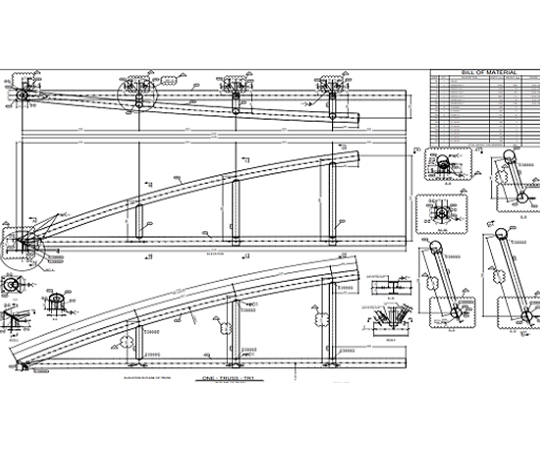
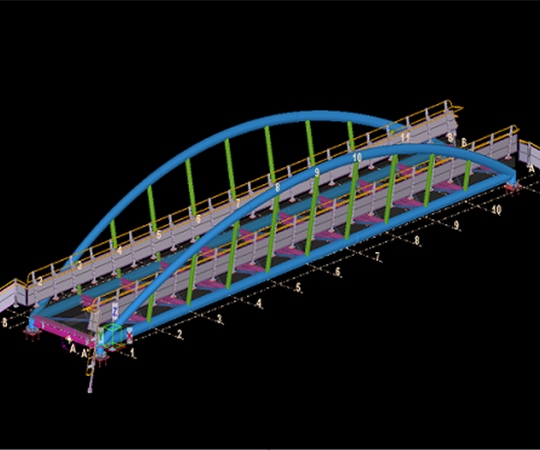
Case 2: FEA Analysis of Furnace Design
Client: EU-based digital solutions and engineering services provider for Fired Heater & WHRU Simulation, Design, and Operations.
Project Insight: Lifting trunnion calculation, for the lifting of the heater section. The lifting is performed using two Trunnions and a Tailing lug. Rishabh’s team performed static analysis using the Von Mises stress principle and validated the design.
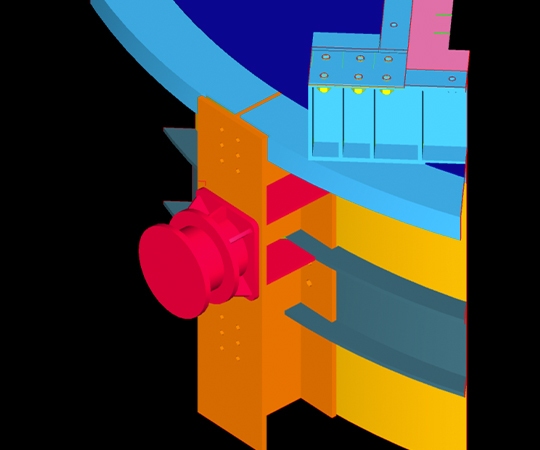
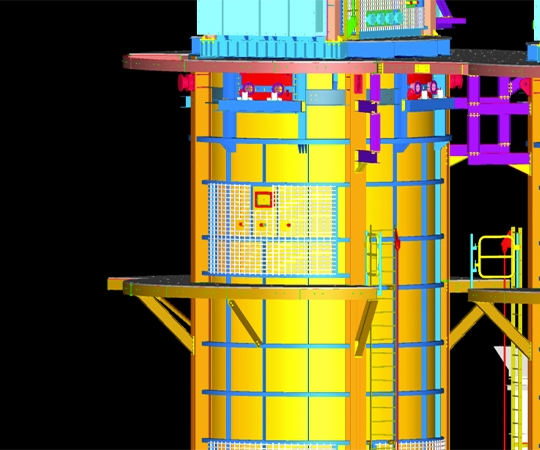
Final Words
In conclusion, design optimization with FEA is a game-changer in engineering, allowing for an in-depth analysis of structures for improved performance and productivity. FEA allows our structural stress analysis services team to identify weak points, refine designs, and optimize components, resulting in cost savings and improved product reliability. By combining advanced simulation technology and design optimization principles, the development process is streamlined, and innovation and sustainability are fostered. As industries change, FEA integration remains an essential component of design optimization, allowing engineers to achieve optimal results and remain at the top of engineering innovation. By embracing this powerful combination, engineers can create solutions that are more than just functional; they are also robust, enabling products to meet and surpass performance expectations in an ever-changing landscape of technological innovation.
Wish To Explore FEA For Unparalleled Design Optimization?
Our team excels in navigating the complexities of structural refinement and predictive analysis to offer cost-effective solutions.
Related Blogs
Related Blogs
Best Structural Engineering Software for Accurate Analysis
Finding tools that simplify and improve the accuracy of the…
Detailed Engineering Considerations for Project Success
Engineering projects today require meticulous planning and execution across various…
